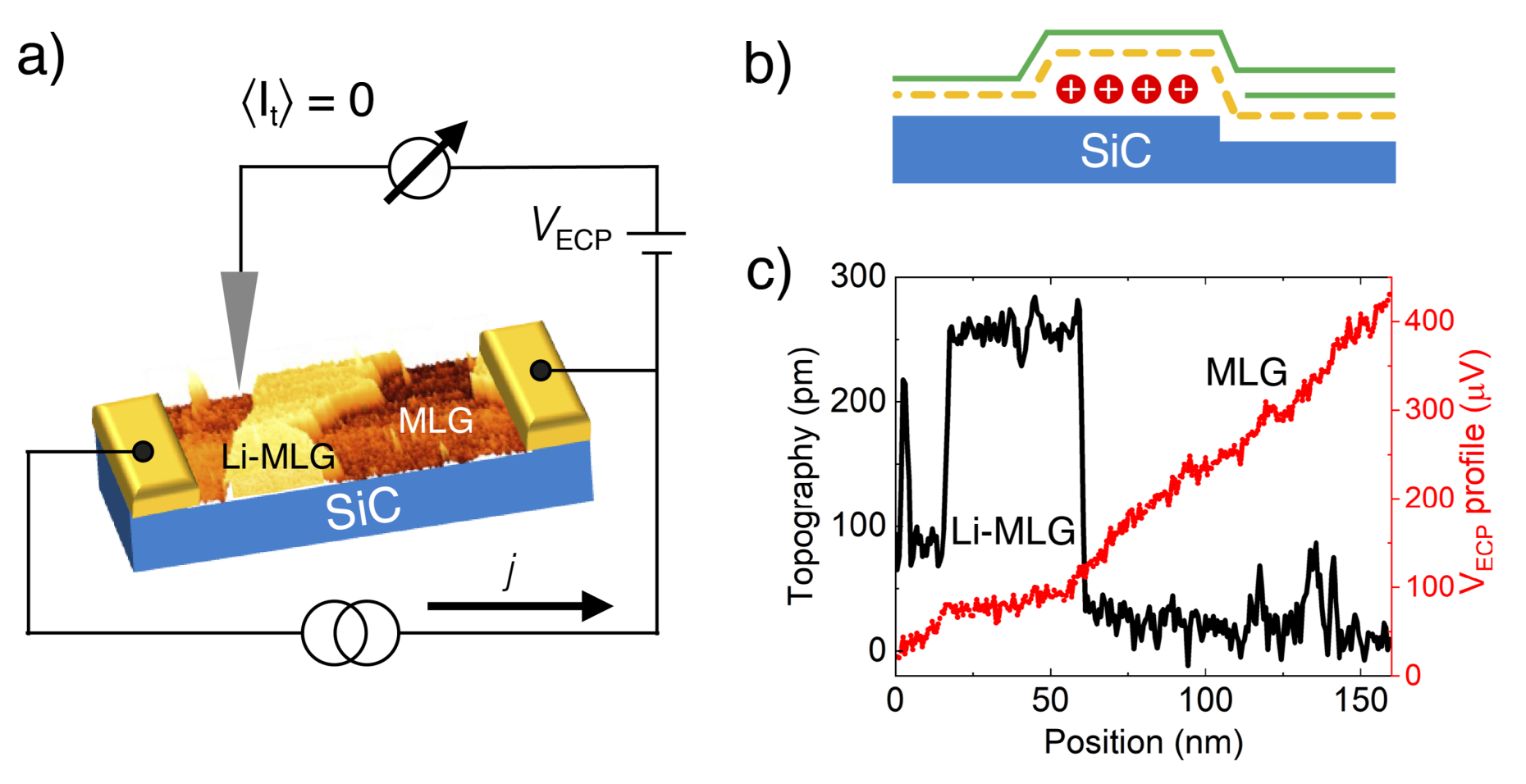Local charge transport in different Li doped graphene phases
The intercalation of atomic species beneath epitaxial graphene has drawn considerable attention as a means of optimizing graphene's transport properties. In particular, Li intercalation can strongly increase the carrier density and create a large-scale, clean quasi-free graphene layer on the SiC substrate. Various techniques have been used to investigate the changes in morphology and electronic states of the Li intercalated graphene, however, several questions including how the Li penetrates the graphene sheets and reaches the SiC substrate, remain open. Additionally, the interplay between the charge state of Li and the associated charge transport properties of the resulting intercalated graphene remains unexplored. Therefore, it is essential to understand the process of Li intercalation and measure the graphene’s transport properties to design and fabricate devices for future graphene applications.

The intercalation of atomic species beneath epitaxial graphene has drawn considerable attention as a means of optimizing graphene's transport properties. In particular, Li intercalation can strongly increase the carrier density and create a large-scale, clean quasi-free graphene layer on the SiC substrate. Various techniques have been used to investigate the changes in morphology and electronic states of the Li intercalated graphene, however, several questions including how the Li penetrates the graphene sheets and reaches the SiC substrate, remain open. Additionally, the interplay between the charge state of Li and the associated charge transport properties of the resulting intercalated graphene remains unexplored. Therefore, it is essential to understand the process of Li intercalation and measure the graphene’s transport properties to design and fabricate devices for future graphene applications.
In our work [1], we report a new metastable phase in the intercalation process of lithium in epitaxial mono- and bilayer graphene grown on SiC at room temperature, where mobile Li is trapped between the top graphene sheets (Fig. 1a). We also find the hitherto established phase where the Li is believed to reside below the graphene buffer layer (Fig. 1b). To elucidate the effects of the different intercalation states on the Li charge transfer and doping of graphene we conduct detailed analysis of their electronic properties using tunneling spectroscopy. Moreover, for the first time, we also map the local electrochemical potential for current-biased Li-intercalated graphene sheets using scanning tunnling potentiometry, which allows direct insights into the charge transport properties of nanoscale domains (Fig. 1c). The different Li intercalation phases show distinct behavior for electron transport with only minor effects for the new metastable phase and strong effects for the deeper Li intercalation phase. Our findings highlights the critical role of different intercalation processes in modifying the graphene properties.
Selected Publications
[1] Observation of different Li intercalation states and local doping in epitaxial mono- and bilayer graphene on SiC(0001), W. Huang, J. Seo, M. P. Canvan, P. Gambardella, and S. Stepanow, Nanoscale, 16, 3160 (2024).